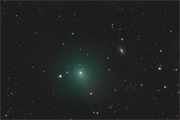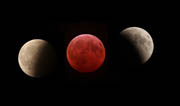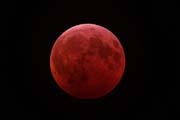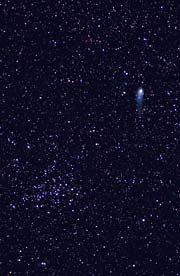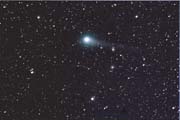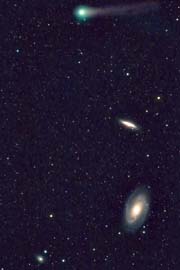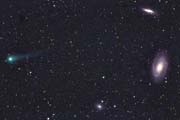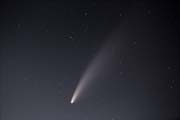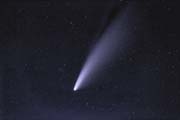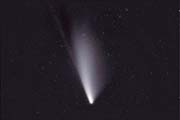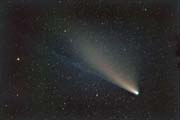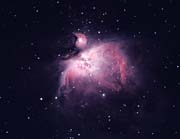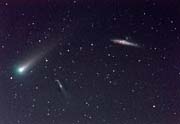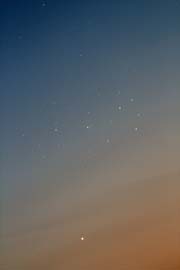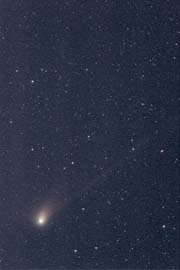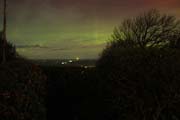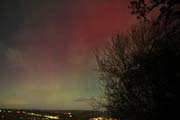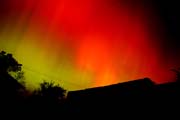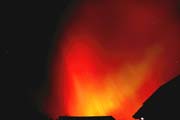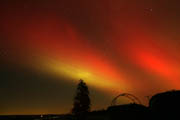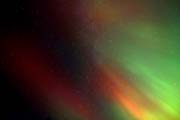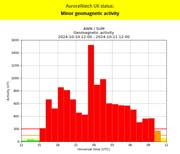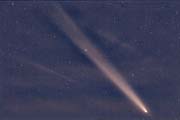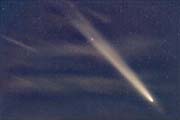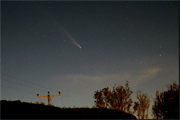Comet 46P Wirtanen passed close to the Earth during December 2018, at its closest on 16th at which time it was also near Messier 45, The Pleiades. On that day and either side of the day it would have made a splendid wide field photograph - the comet was very bright - almost naked eye. Alas the weather did not cooperate, cloudy all three nights.The next really interesting encounter was the night of 16th January 2019, when it was due to pass almost directly over the interesting polar ring galaxy Arp 336 (NGC2685\) in Ursa Major.
I kept my fingers crossed for a clear sky in the small hours (Moonset was not until 4 am on 17th) and for once the sky gods smiled on me and after a snowy cold front passed through it was beautifully clear for a couple of hours. By that time the comet core was approximately 10 arc-minutes from the centre of the galaxy. I used my Canon 700D on my 10" RC scope (2000mm fl) to try for some galaxy detail with a succession of 5 minute subs - any longer would show too much movement of the comet at that focal length. And this was the result. The galaxy really needed much longer exposures, but the polar ring is just visible.
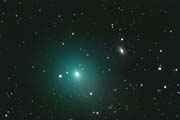
I already had an image of the galaxy from 2008 and there was enough detail and nearby stars to position it exactly in the main image. 16 x 5 minute subs, darks, flats and bias frames also used. Guided with my Lodestar on a Celestron off-axis guider. The two distant edge on galaxies in the lower part of the image are (reading down) PGC 25034 (mag 17.1) and PGC 25046 (mag 16.7)
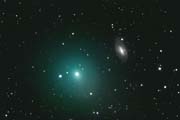
This is an animation of 16 frames. There is a slight jump, a couple of the originals were unusable. Larger version here (2.68MB). As you can see by tracing the path back, the coma would have passed over the galaxy. A pity there was a bright Moon - if it had been New, with full darkness at 6.30 pm on 16th instead of 4 am on 17th, the comet would have been at its closest to the galaxy at the start of the imaging run and I would have many more exposures and a much longer animation.
